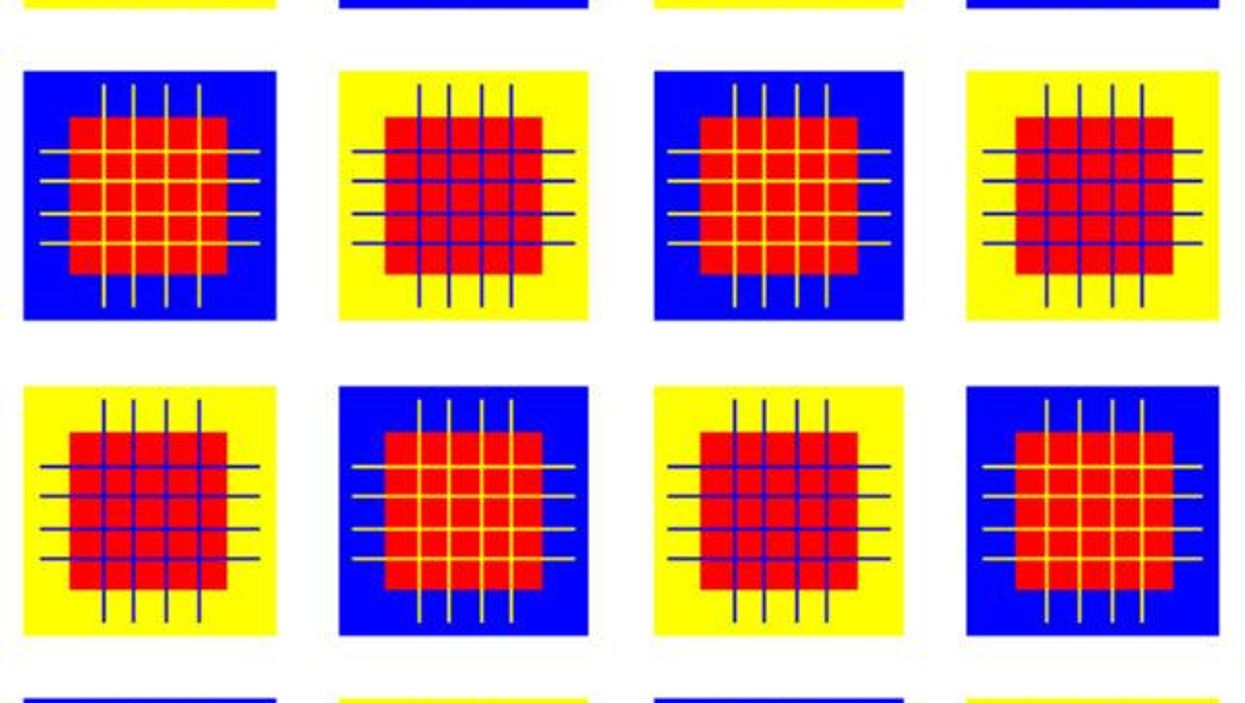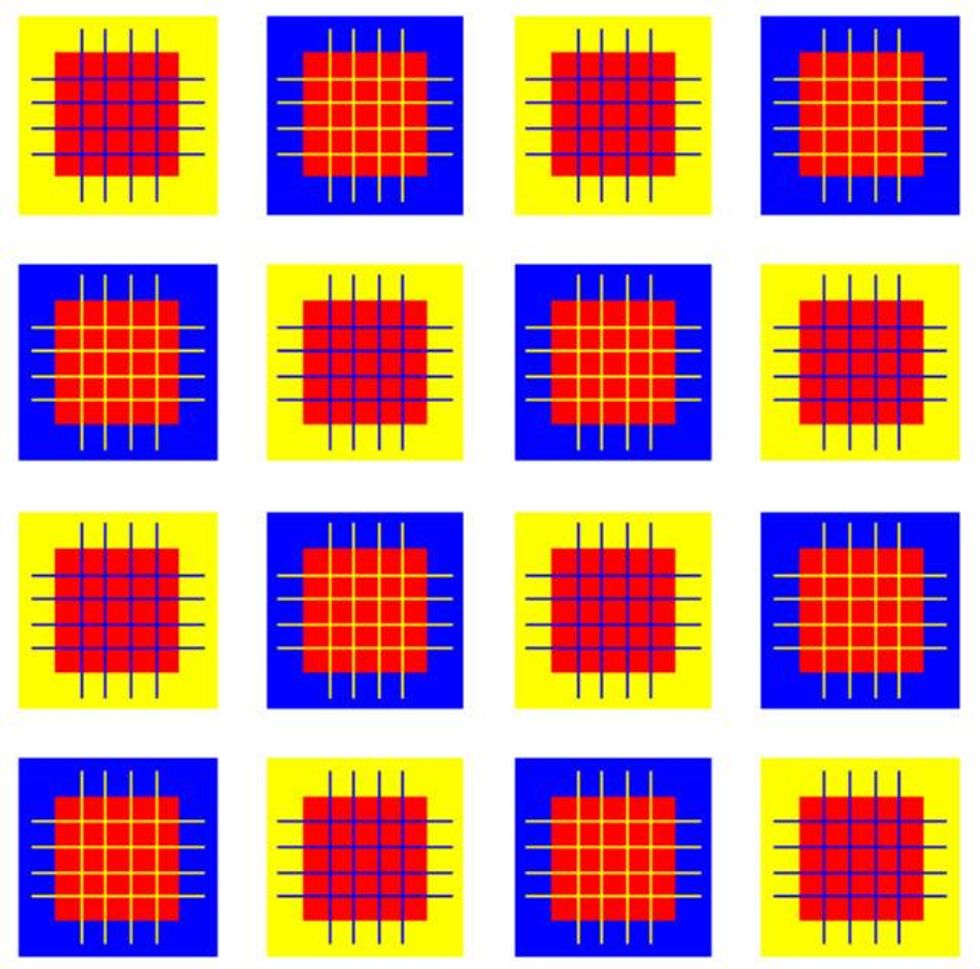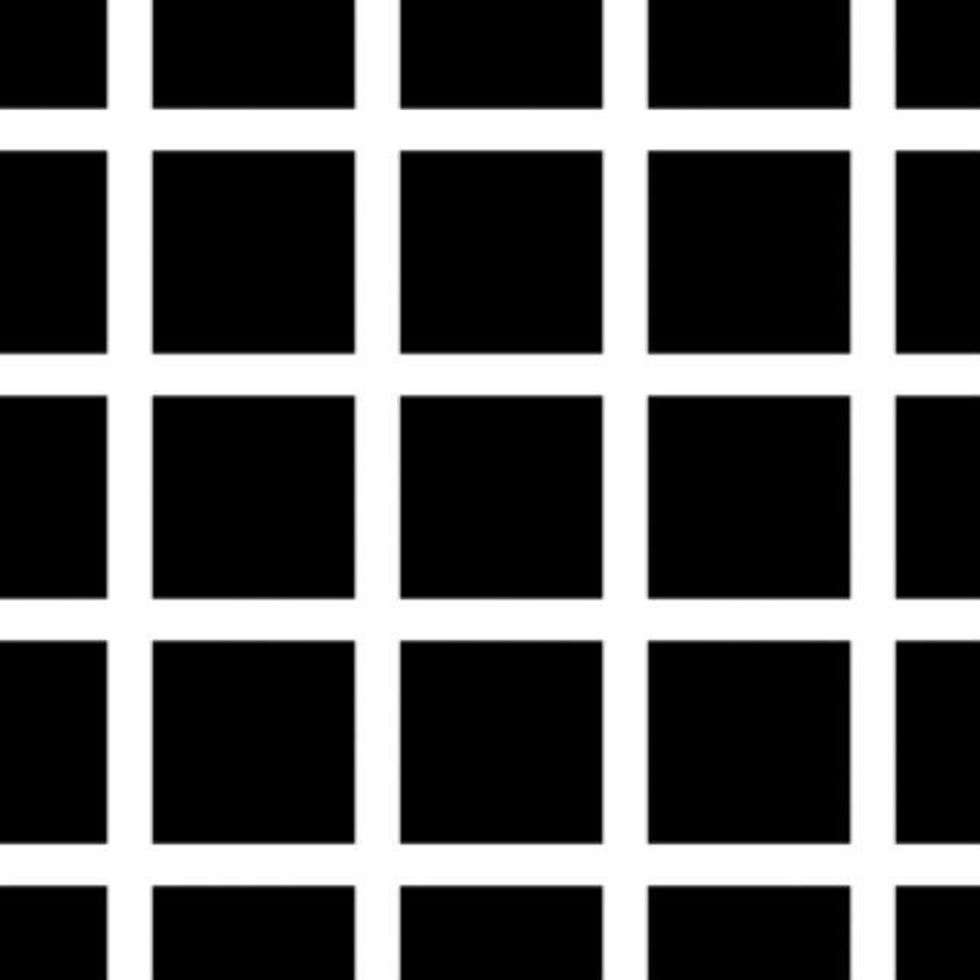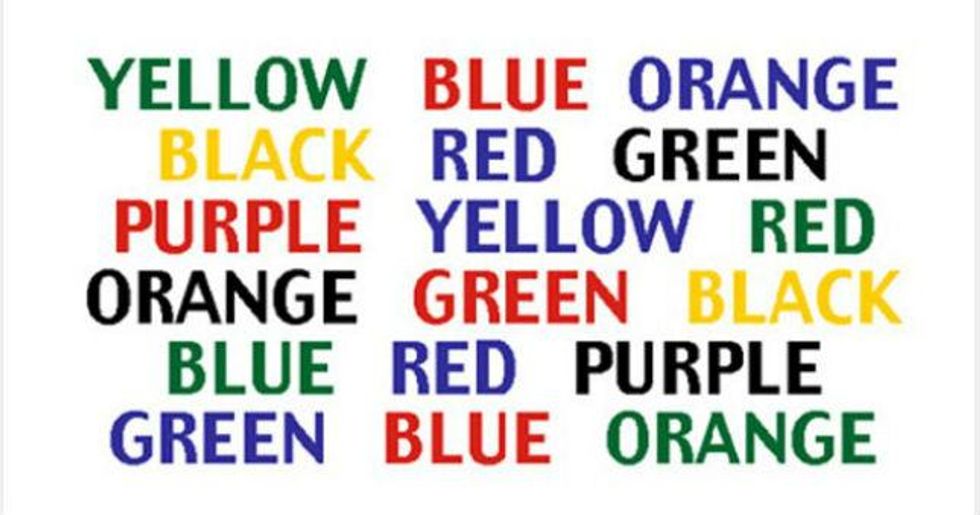Viral
Narjas Zatat
May 12, 2016

No, the internet has not grown tired of optical illusions.
In fact, the newest set making the rounds are to do with the relationship between the brain and the eyes.
The claim is that the quicker you can answer the following questions correctly, the better your brain is at perceiving information.
Here are four illusions, and the accompanying questions:
1. How many colours do you see?
Picture: A. Kitaoka
There are only three colours: yellow, red and blue. The central squares are all the same colour.
Chromatic assimilation and chromatic contrast, which is the effect that different background colours have on your eyes, makes some of the squares appear orange.
2. How many colours do you see now?
There are only two colours, black and white, and the illusion is in the grey circles that appear as the white lines cross.
The grid was first reported by German physiologist Ludimar Hermann in the late 1800s, and it was eventually named after him.
3. Which orange circle is bigger?
The circles are the same size, and again, the peripheral grey circles of varying sizes impact the way our eyes perceive the orange ones.
The illusion was discovered by German psychologist Hermann Ebbinghaus in the mid-nineteenth century.
4. How many colours are named?
Another classic, this one seeks to confuse your brain by writing the name of a colour in a different colour.
There are seven: blue, yellow, black, orange, green, red, purple.
So what does this actually mean for your brain and your eyes?
Researchers Steven K Shevell and Dingcai Cao wrote:
A single wavelength presented on a dark background has a characteristic colour but the same wavelength can appear a very different hue when seen within a context of other nearby light. Context affects the neural representation of the visual stimulus, and thus its appearance.
HT: PlayBuzz
More: The 9 optical illusions that will make your brain melt
More: There is only one type of brain that is not fooled by this illusion
Top 100
The Conversation (0)
















